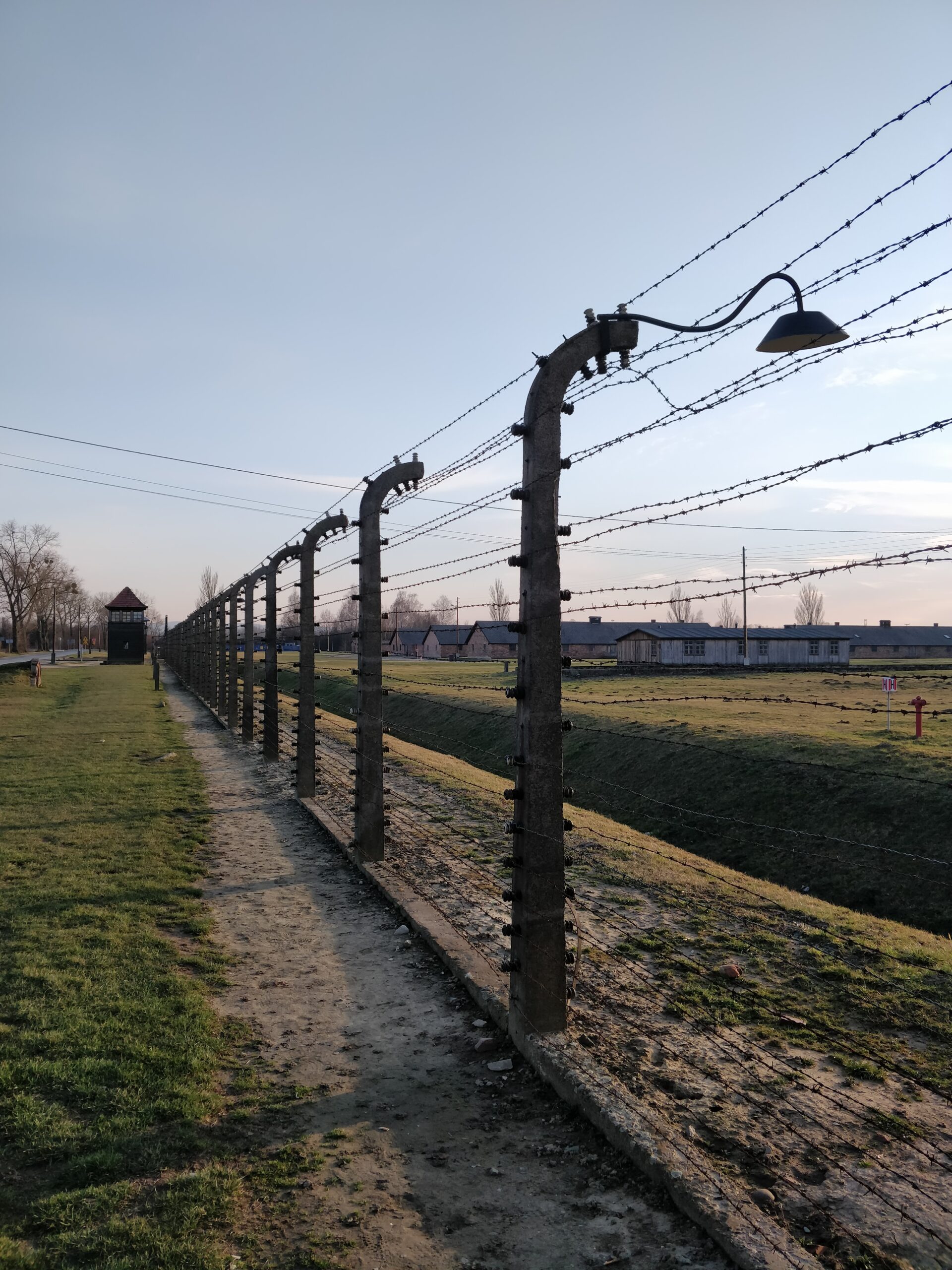In contrast to the persecution of Jews during the Second World War, that of Roma was not as well-organised and prepared, nor as systematic. Rather, while Roma faced constant discrimination, their erasure did not at first represent the “first priority” for the Nazis and the Hungarian government. As Hungary and Germany were allies, the Horthy regime could resist the German demands to deport Jews and Roma to a certain extent. However, both groups were heavily discriminated against, interned in Hungarian camps, and were subjected to forced labour. With the German occupation of Hungary in spring 1944 and the installation of the antisemitic and collaborative Arrow Cross regime, Jews and Roma were detained in large numbers and deported to German concentration camps. A lot of them were sent to the concentration camp in Dachau or Auschwitz, and from there, some were deported to Ravensbrück or Bergen-Belsen. In September 1944, fearing the approach of the Red Army, the Nazis began the mass murder of Hungarian Roma. The exact number of Roma that died during the War due to the genocide is hard to determine, since a lot of Hungarian Roma lived in borderlands of the surrounding countries. However, estimations state between 5,000 to 10,000 individuals.
Placing emphasis on the persecuted individuals resisting their oppressors is an important perspective, yet it lacks scholarly attention in the case of the genocide of Roma during the Second World War. Their portrayal as helpless victims takes away from their personal experiences and risks viewing them as just a number – as a tragic incident, but not as human beings. It also deprives them of agency. Equalising oppression with victimhood results in the denial of the oppressed group’s own initiatives and excludes the possibility of those involved to engage in struggle for change.
Agency can in this case be understood as a woman´s strategies for individual survival and does not only apply to a collective struggle for transformation. As this concept is prone to ascriptions of certain gender perceptions, the gendered perspective is to be incorporated. The common understanding of the binary opposition of male activity and female passivity often marginalises women and their freedom of action as well as their own will to change. Therefore, heroism remains a phenomenon connoted to masculinity, while women often continue to be unseen.
Defining resistance as a response to domination helps to disengage the term from the popular portrayal of a heroic male resistance fighter. Following Szász´ argumentation, surviving the genocide can also be seen as a form of resistance. Since Romani women were exercising a choice to survive, this can therefore be understood as an act of agency.
Romani women’s resistance to oppression
Overall, Romani women´s resistance can be summarised as a protection and perpetuation of their community. Through the use of internment camps, separation of families, and deportation to concentration camps, the Nazi regime and its collaborators tried to dissolve the Romani communities by controlling and persecuting them. Women in the camps helped and supported each other, and the creation of new relationships and networks aided them in surviving and being able to adapt to the new circumstances. This feeling of solidarity and belonging was at risk when children were separated from their parents, as was often the case in Hungarian internment camps. In Auschwitz, where Roma families were interned together, there was a traditional division of labour, according to which all members of the family had different chores. Since children had to be looked after, they either accompanied their mothers to the forced work, or they were taught to watch over younger children and babies. In some cases, the women divided the work among themselves and rotated in shifts, so that one woman was always there to care for the children.
Role of fantasy and oral culture
In order for the children to feel safe and have a connection to their cultural heritage, women told them bedtime stories, which can be categorised as “cultural resistance”. One survivor recalls that
“(a)fter work my mother told me stories of her childhood when they had horses and played with them and slept under the stars. But once I can remember I did not fall asleep and heard them crying while talking about their pains and their fears that they would not survive”(1)
In this case, imagination and fantasy helped both the children and the mothers to disguise their feelings by escaping into an alternative world and regulate their reactions – like fury and frustration – to the oppression. This intimate communication between the generations also helped to create a unified collective to perpetuate their Romani culture and way of life. Thus, the use of the Roma language itself can be understood as a form of resistance; as an exclusively spoken language, it was very difficult for the authorities to effectively suppress.
Catastrophic living conditions in the overcrowded camps, with little to no medical care, led to rampant disease. One of the most severe challenges in the camps was the provision of sufficient food, and mothers used all means possible in order to provide their children with additional food. Earlier established networks could help with the supply, but sometimes Romani women would also resort to illegal methods:
“The women went to the kitchen to help peeling potatoes, vegetables, carrots, to be able to steal a bit, so that we could eat something. But if they caught someone stealing, they just battered them to death. My poor aunt was able to get lard, and outside in the courtyard they cooked stewed soup. That was quite something”. (2)
One survivor recalls her mother cutting open her own skirt at the waist and hiding some money before they were taken to the internment camp in Hungary, to have at least some financial means if they would be able to escape. “When we came free, (…) she took it, and bought us food with it”. (3)
If a family had made it through these difficulties, there was yet another challenge: after the camps had been freed, they had to look for their relatives and reunite their family. While trying to get back on their feet, many families found it difficult to create a place to live autonomously without undue state control, and to regain their sense of family and traditional way of life. Roma often faced a multitude of problems: broken families and not knowing the fates of their loved ones, chronic food shortages and poor to non-existent job prospects. The importance of the family unit is reflected in the memoirs of one survivor:
“We came home to Tüskevár, but there was nothing left. They had taken everything. My aunt had been waiting for us (…). She had learned that they let us come home, and came and waited for us in Tüskevár. She heated water, bathed us one by one, combed the lice out of our hair, because there was so much, it was terrible. As she undressed us, she threw our clothes into the fire. (…) You know, there were no men in the family, only women. (…) They tried to find out if their husbands were alive or dead. Nobody could tell anything.”(4)
In all these cases, Romani women persevered despite their suffering, to preserve their community and create a place in the concentration camp where their own culture and own language was maintained. Although they were limited in their freedom of action due to the persecution and oppression of the Nazis and their collaborators, they were not helpless and still managed to act in small ways that helped their community or themselves. In this way, Romani women during the Second World War were active agents of resistance who exercised the choice to support their families no matter what. It is important to note that the persecution of Roma and bad conditions did not end with the liberation of the camps by Allied forces. In many testimonies of oral history, it is shown that the wartime persecution and genocide represents just one episode in the struggles of Roma which extend both before and after the war, continuing even today as sustained discrimination in society, housing, work, and other areas.
Bársony, J., and Darózci, Á. (2004). Pharrajimos: A romák sorsa. Budapest: L´Harmattan.
Pásztor, I. Z.; Pénzes, J.; Tátrai, P. and Pálóczi. Á. (2016). “The number and spatial distribution of the Roma population in Hungary – in the light of different approaches.” Folia geographica, Acta facultatis studiorum humanitatis et naturae Universitatis Prešoviensis 58, no. 2, 5–21.
Szász, A. (2008). “Is Survival Resistance? Experiences of Gypsy Women under Holocaust.” Department of Nationalism Studies, Central European University.

